Not all car owners are fully aware of their vehicle's engine. What most drivers don’t know is that it is vital to know if the engine temperature of their vehicle is in the right engine. It’s helpful in knowing if the engine is doing well.
Remember that the engine is the heart of your car. Learning about engine temperature is important whether you’re driving a manual or automatic transmission.
Always keep in mind that temperature gauges in every vehicle differ but all of them are designed to simply tell if the temperature of the vehicle is cold, hot, or safe. Digital gauges may also provide temperature information but only the relative high or low.
Philkotse.com will help you understand engine temperature and how to check if it is at the right level. Read on this article to find out.
1. Reading the engine temperature of a car
Almost everyone is aware that the overheated engine is a dangerous thing. What most driver and car owner may not know is how to read gauges and what to do once they knew it’s overheating.
In this matter, it’s not only about the knowledge on how to read car gauges or how to sight symptoms of overheating car, but it is also about how to react in similar situations. Note the following gauges and what they indicate.
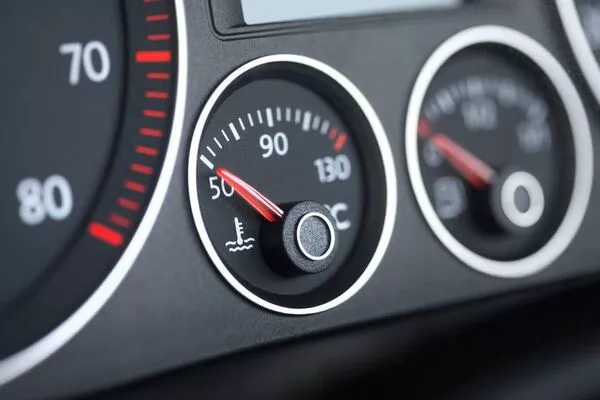
What most driver and car owner may not know is how to read engine temperature gauges
Analog gauges
Most gauges, if you noticed, show information through a numberless panel. Gauges differ; some have blue and red, or C and H and a point in between them indicating the normal temperature. Here’s how you should interpret:
- Normal – everything’s fine
- Cold – everything’s still fine. For old vehicles, the engine needs a warm-up, especially during cold weather. For modern cars, there's no need for warming up because the modern car computer will supply fuel even if the engine is cold. This way, it will increase the temperature and keep the engine running.
- Hot – it is worrisome and you need to react.
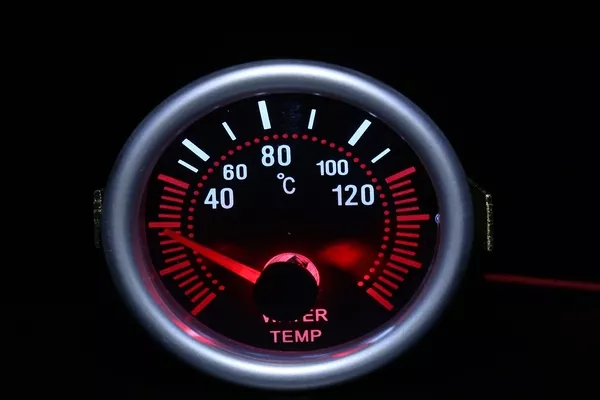
Gauges differ; some have blue and red, or C and H and a point in between them indicating the normal temperature
>>> Check out: What to do if your car overheats: 10 must-know things for Pinoy drivers.
Digital gauges
Digital gauges show temperatures in Fahrenheit. For a gizmo-type of person, he/she will check the meaning of the temperature indicated in the digital gauge.
- Below 240 degrees Fahrenheit – everything’s fine
- Above 240 degrees Fahrenheit – this means the engine is overheating. The digital gauges will also set an alarm or a blink. You need to immediately address the issue and get it under control.
Take note that one of the most common issues with the engine is overheating and this shouldn’t be ignored.
2. What is a normal temperature?
The ideal engine temperature is between 195 to 220 degrees Fahrenheit. The engine is normally operating if the needle is near the center of the gauge. Normal engine temperature doesn’t necessarily mean that the needle will sit directly in the middle. The key here is to become familiar with what the temperature and reading are normal for your car.
On hot days in particular, when you’re using the air-con on full blast, the increase in normal engine temperature in the gauge reading will be noticeable. If this is the case, it’s nothing to be concerned about, as long as the reading doesn’t continue to rise as you drive.
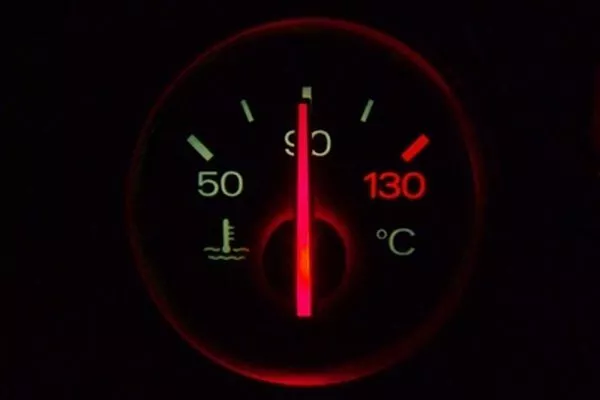
Normal engine temperature doesn’t necessarily mean that the needle will sit directly in the middle
3. Why the engine overheats
When the engine overheats, usually, there’s a problem with the cooling system. It is either because of a low coolant level or the radiator stopped working. When your engine overheats, the temperature needle will start to go in the direction of the red zone and /or the light of the engine temperature warning light comes on. If this is the case, stop driving.
If the car is overheating, it's dangerous to continue driving even in short distances because it can cause major damage to the cylinder head, engine block, and many other engine parts. If ever you experience an overheating engine, it’s best to bring your vehicle to the nearest auto repair shop for inspection and repair.
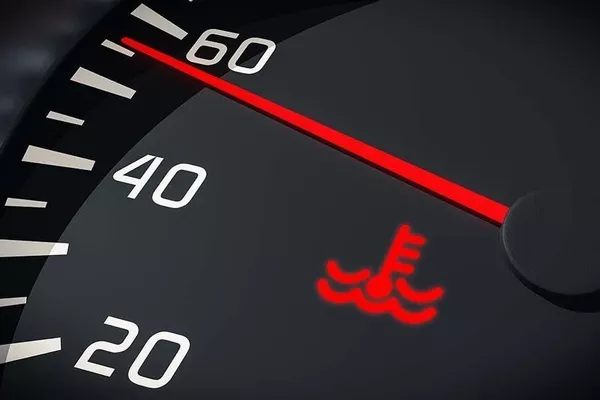
When the engine overheats, usually, there’s a problem with the cooling system
>>> Read more: Causes and remedies for overheating automobile engines.
4. Why the temperature reading is low
There might be instances where you experience a temperature gauge reading is low, or the temperature gauge needle is moving closer to the “L” or cold side, even after a few minutes of engine warm-up.
If this happens, it might be because of a thermostat malfunction or problem within the temperature gauge itself. No matter what the problem is, you need to have it checked by a service professional.
5. How to prevent overheating problems
There are easy ways and tips to prevent car overheating. They are the following:
- Include a coolant or distilled water in your emergency road kit and always have it ready in the trunk.
- Make it a habit to regularly check the antifreeze or coolant level of your vehicle. Also, make sure to use the right mixture of water and antifreeze.
- Always keep an eye on the temperature gauge of your vehicle when you’re driving. If you see that the needle is moving closer to the right side, then employ the steps on how to get your engine cooled off.
- If you suspect that there are any antifreeze leaks, consult it to your mechanic and have the problem fixed right away.
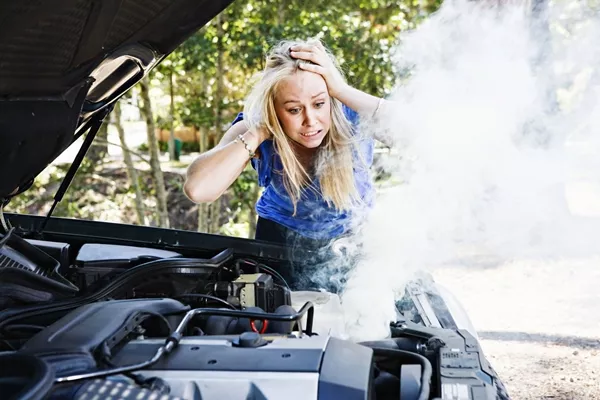
There are easy ways and tips to prevent car overheating
6. What to do if your vehicle overheats?
- Stop driving but don’t press the brakes too hard. If your engine overheated, slow down and pull the vehicle on the safe side of the road then turn off the engine.
- Do not attempt to start the engine after several minutes thinking that it has already cooled down. More often, the engine overheats because of low levels of coolant, so before starting the engine again, you have to solve the problem first.
- Do not open the hood right away because there are higher chances that you will get your hands burned. Open it after a few minutes and with caution.
- Do not remove the water system cap or radiator cap right away. There’s a high risk of it blowing up because it’s under high pressure.
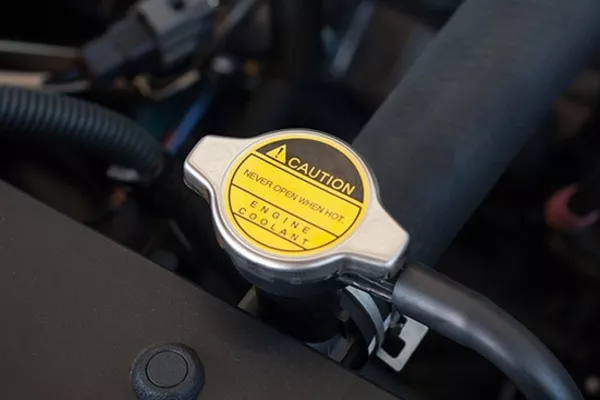
Do not remove the water system cap or radiator cap right away
- If you suspect that the radiator needs coolant, do not refill it with antifreeze. You first have to check if there’s a presence of bursts and leaks in the coolant system. If there’s a burst or leak, then it could be the main reason why the vehicle overheated.
- Once you refill the coolant, try starting the engine. If it overheats again, don’t try to figure it out by yourself. Consult a professional to resolve the issue.
Have more useful information for your car right here, change your direction to our tips and advice!
Recent posts
- Engine protection: 5 engine parts you need keep close eyes on Nov 30, 2022
- Beat the heat: 8 tips to prevent your car from overheating Jul 18, 2019
- Top 10 improvements in car engine design Aug 09, 2022
- 10 Must-know Car Engine Sensors Aug 09, 2022
- Distilled water vs Coolant: Which is the best product for your radiator? Mar 06, 2021












